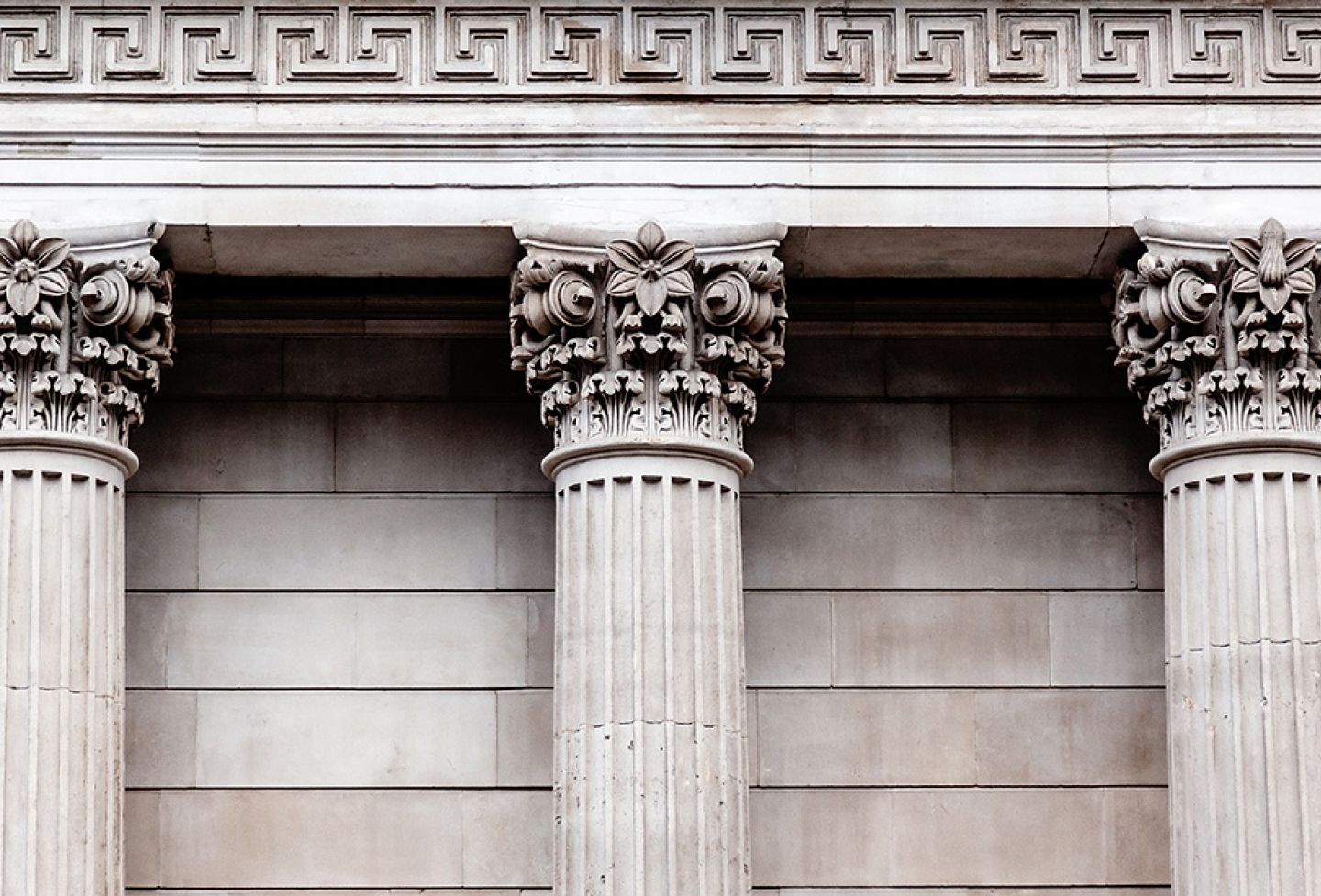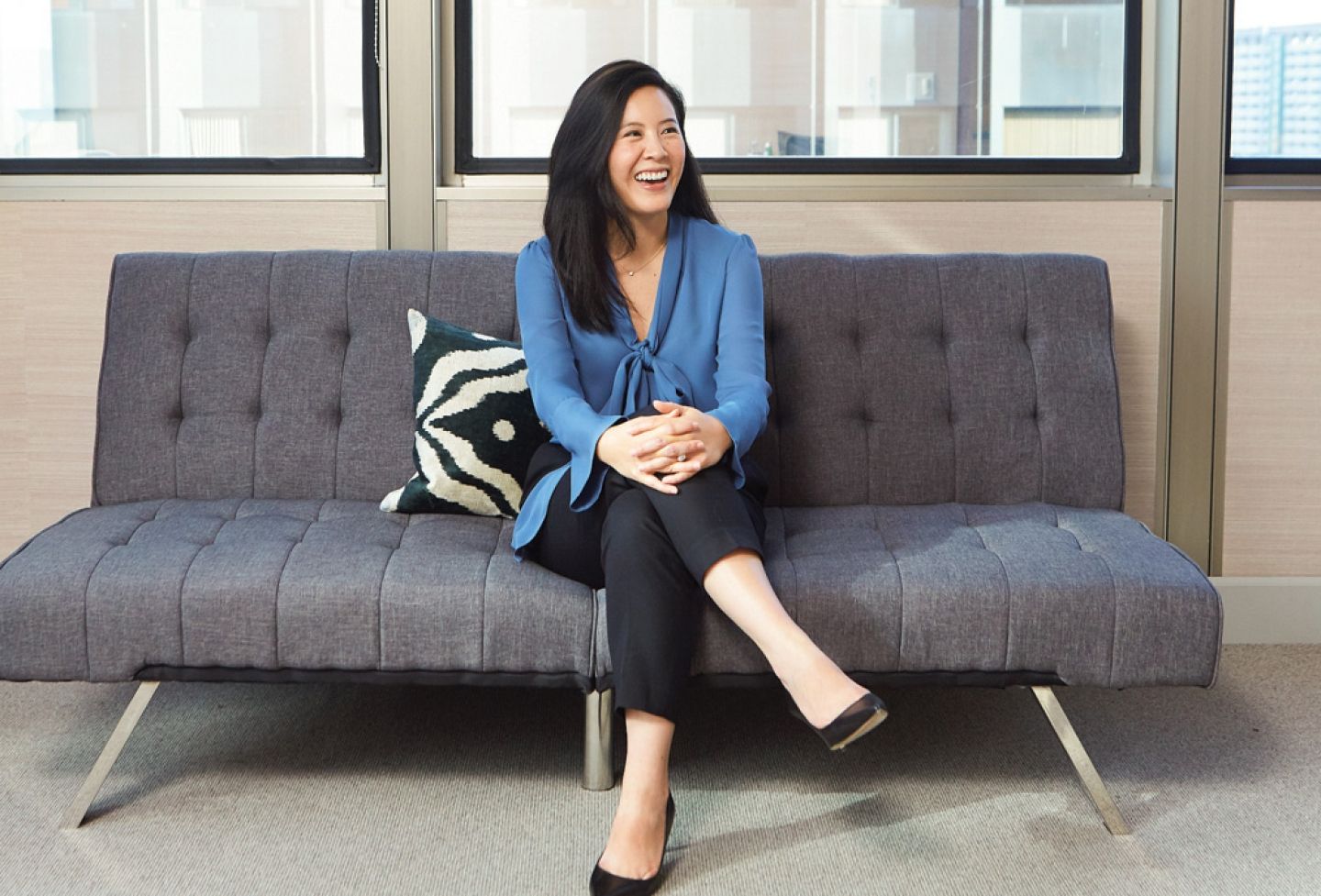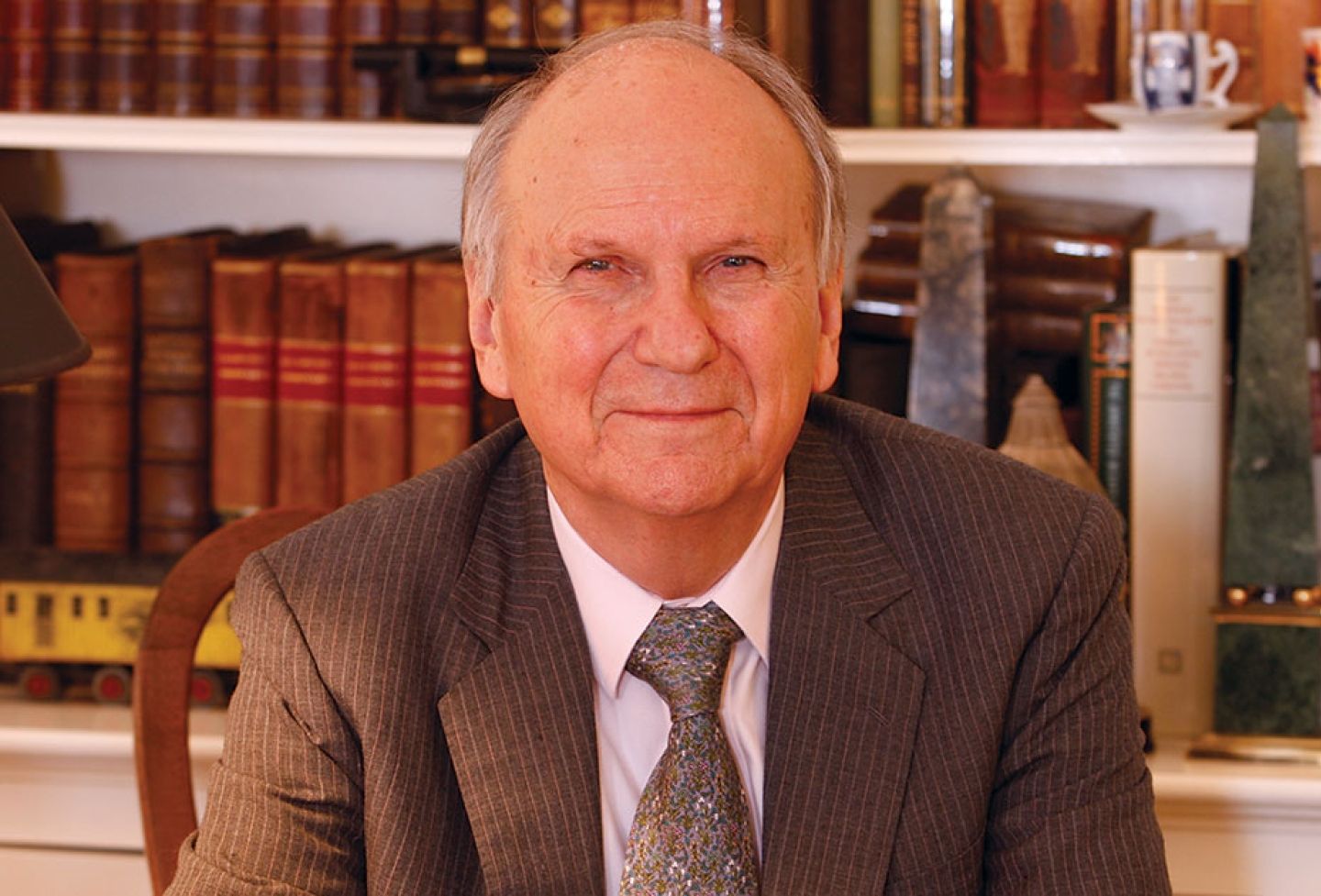Ameeting in the Law School’s tiny basement women’s lounge 50 years ago helped make space for more women at the Law School.
Mary Jane McFadden ’74 — an Ohioan who would go on to become an assistant U.S. attorney and, later, co-founder of the firm McFadden, Winner & Savage — had come to UVA from Ohio State University, where she had some experience wrangling with authority. When her university and others shut down following the Kent State massacre, McFadden was among the students who negotiated terms for reopening. On her way to law school, she anticipated having to negotiate again.
In an interview conducted by the UVA Law Library for its Women’s Oral History Project, she explained that she chose UVA because of its reputation and inviting setting, at least visually. She had checked out the Department of Education statistics, so she knew the number of women in the law student body was “very low” — 6.7% of the total law student population as of fall 1970. Yet women had been a presence at UVA Law since 1920, when three — Elizabeth Tompkins ’23, Rose May Davis and Catherine Lipop — became the first to study law on Grounds.
Five decades later, in 1971, there were only 25 women in the class of 1974.
“And that was pretty typical of all of the major law schools — I’m talking every top 10 law school admitted only about 20 women in every class, and we’re talking Harvard, we’re talking Yale, we’re talking Georgetown, all the major schools,” McFadden said. “So it’s very clear that they had de facto admissions limits on women students.”
Before she arrived, McFadden mailed letters to the female law student body, including incoming members of her class. She asked them if they wanted to organize to promote their shared interests as women.
“This was before word processors, and I’m a terrible typist,” she said. “So this was like, a two-week project to write, to type 52 letters. I probably used three bottles of Wite-Out, I’m sure.”
She received two responses back: one note, one phone call. The students advised her that drawing attention would make their lives harder. The court-ordered admission of women at the undergraduate level had just begun at UVA. McFadden recalled a man spitting at her feet as she walked across Grounds her first week, perhaps assuming she was among the new wave of coeds.
Not to be deterred, however, McFadden kept the conversation going at the Law School, which was then located at Clark Hall on main Grounds. But finding an opportune space to approach other women at the Law School proved challenging. Fortunately, there was one place women could gather without fear of male judgment.
The women’s restroom and lounge area, located in the basement, was perhaps the only place in the building where women could congregate and speak freely — a fact the Virginia Law Weekly acknowledged in a 1962 article reporting on lounge renovations. In contrast, the ground-floor student lounge denied female students entrance “as effectively as would written law,” the newspaper wrote of the boys’ club atmosphere. Law Librarian Frances Farmer (and for many years the only female faculty member) had supervised renovations to the women’s space, splitting the lounge portion, and its one window, into staff and student sections. Adjacent to the janitorial office, the renovation was a “common meeting ground for all strata of Law School womankind,” the article stated.
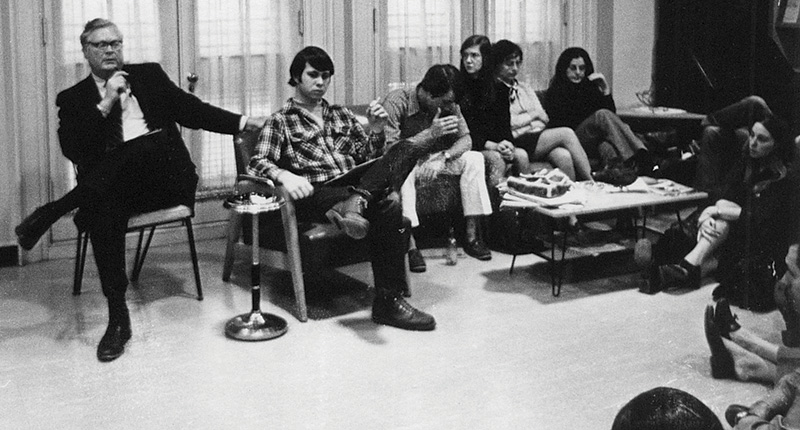 Students, led by members of Virginia Law Women, had a serious talk with Dean Monrad Paulsen in the spring of 1972 about the representation of women at the Law School, including the lack of a tenure-track law professor. Professor Lillian (Altree) BeVier joined the faculty the following year and became tenured soon after.
Students, led by members of Virginia Law Women, had a serious talk with Dean Monrad Paulsen in the spring of 1972 about the representation of women at the Law School, including the lack of a tenure-track law professor. Professor Lillian (Altree) BeVier joined the faculty the following year and became tenured soon after.
It was there that McFadden first met Diane Hermann ’72, beginning a long friendship that would last until Hermann’s untimely death in 2006.
“There was one women’s restroom, it was in the basement, which meant that if you needed to use the ladies’ room between classes, you’d better hustle,” McFadden said. “And it did have a little anteroom off to the side, which had a little sofa in it, and a chair to sit in. And one day, my first week in law school, I was sitting in that — on the sofa in the little ladies’ room — and this woman with a big grin walks up to me and introduces herself as Dee Hermann. And I told her who I was, and she looked at me and she says, ‘Holy s---.’ She said, ‘You’re the woman that p----- off half the Law School before you even got here.’”
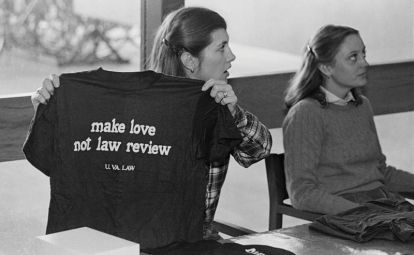
Virginia Law Women sold “make love not law review” T-shirts in the early 1980s.
Now there were two. Technically, McFadden noted in her oral history, that was enough to form a group.
Dean Monrad Paulsen approved their request for formation without pushback. (Requests after the group was up and running, such as asking that a female student be allowed to advise the faculty hiring committee, did not always go as smoothly.) Paulsen, “oddly enough, was delighted at the idea of having a women law students’ organization,” McFadden said.
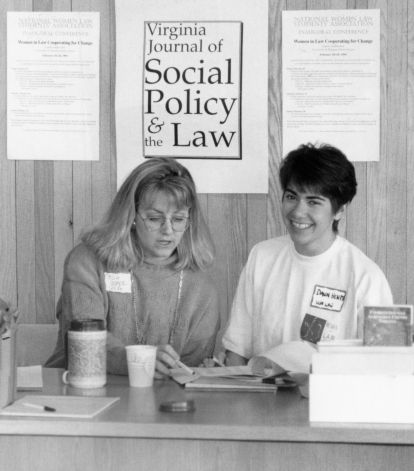
In the late 1980s, Virginia Law Women initiated the idea for what would become the Journal of Social Policy & the Law, first published in 1991. Pictured, Trish Cooper ’95 and Dawn Henry ’95 greet participants attending the first National Women Law Students Association conference in February 1994, sponsored with the journal.
At their first meeting, believed to have been Oct. 6, 1971, 10 women decided it was time to make their voices heard. Other co-founders were Elizabeth Trimble ’73, the group’s first president and a future assistant U.S. attorney in Baltimore and assistant attorney general in Maryland; and Ellen Bass Brantley ’73, the group’s first vice president and a future Arkansas circuit judge.
Hermann proposed at the meeting naming the group the Benevolent Association of Lady Law Students.
“It sounded benign until folks realized the acronym,” according to her obituary in the San Francisco Chronicle. Hermann would go on from law school to work in the San Francisco City Attorney’s Office for more than two decades. In that office, she earned the nickname “killer” for her persistence on cases, and rose to head of code enforcement.
The women agreed on a more serious name for the group, Virginia Law Women, and established their goals: to address discrimination in admissions, faculty hiring and job recruiting on Grounds.
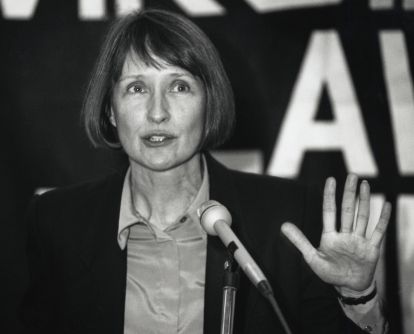
Amid a historical debate among Virginia Law Women, which for a few years avoided the word “feminist” in order to attract a broader membership, the late 1980s and the early 1990s marked a shift back to embracing the term. Patricia Ireland, president of the National Organization of Women, presented a lecture titled “The Holy War on Women - Theocracy in the Twentieth Century” at the Law School in 1991.
That spring, the Law School set new standards for how employers conducted job interviews, began to root out discriminatory firms, and added a new course on women and the law, though it was taught by men. The following school year, 1972-73, the incoming class included 41 women. In 1973, Lillian R. BeVier was hired and began teaching, later becoming the first tenured female professor on the full-time teaching faculty. McFadden said the changes were in large part a result of the group’s efforts.
“And so I guess we did accomplish something that [first] year, even though it was very incremental,” she said.
Today, women comprise 52% of the Class of 2023, which began their studies in the fall.
—With research from the UVA Law Special Collections Department
Your Legal Rights as a Woman: A Handbook for Virginians
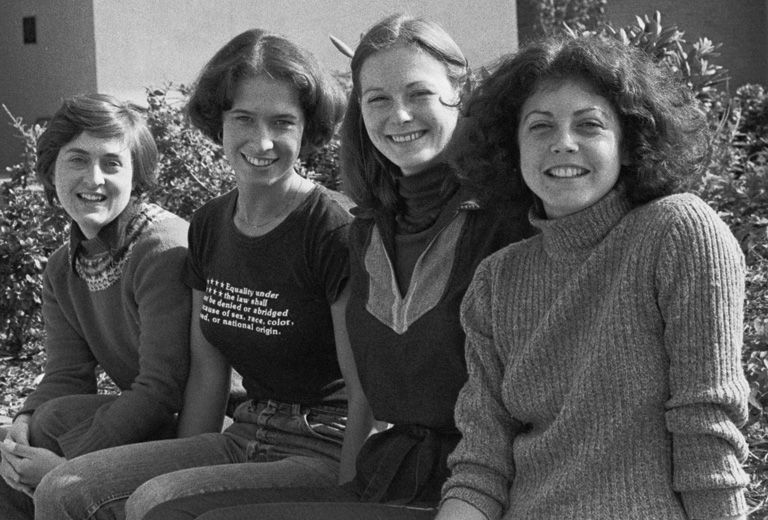
<p>The “Your Legal Rights as a Woman” handbook authors included Diane Pitts ’78, Tracy Thompson ’79, Diane Smock ’79 and Jackie Blyn ’79; not pictured are Joan Kuriansky ’77 and Susan Buckingham Reilly ’78.</p>
Without awareness, what good is having or not having a legal right? That reasoning was the impetus for “Your Legal Rights as a Woman: A Handbook for Virginians,” which Virginia Law Women first published in 1977.
Jackie Blyn ’79, Joan Kuriansky ’77, Diane Pitts ’78, Susan Buckingham Reilly ’78, Diane Smock ’79 and Tracy Thompson ’79 researched and wrote the influential booklet, focused on recently passed laws that worked in women’s favor, as well as ones that did not.
Kuriansky, in an interview last year with Veteran Feminists of America, said their investigation of the law brought women’s lesser legal status to the fore.
“What shocked me was how little rights women really had and the continuing issue of women being treated like property,” she said.
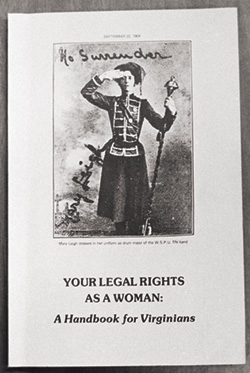 Over the years, the UVA Law Library has collected voluminous materials on Virginia Law Women, including the public’s response to “Your Legal Rights as a Woman.”
Over the years, the UVA Law Library has collected voluminous materials on Virginia Law Women, including the public’s response to “Your Legal Rights as a Woman.”
“In the VLW manuscript collection here at Law Special Collections, one folder brims with requests for the handbook at the time of its publication,” Kelly Fleming, a curatorial assistant at the Arthur J. Morris Law Library, writes for the library’s MoreUs blog.
“Dozens of women who read about the handbook in the newspaper wrote and asked for copies. Several stated that they planned on using the handbook to help them through their divorces. One high schooler even asked for the handbook as research for a paper on the [Equal Rights Amendment]. The group received requests from rape crisis centers, women’s prison projects, libraries, law schools, the American Association of University Women (AAUW), the ABA, the National Organization of Women (NOW), the Women’s Law Coalition and Legal Aid.”
VLW revised the booklet in 1979 and 1984 to reflect updates in the law.
Picturing a More Equitable Environment
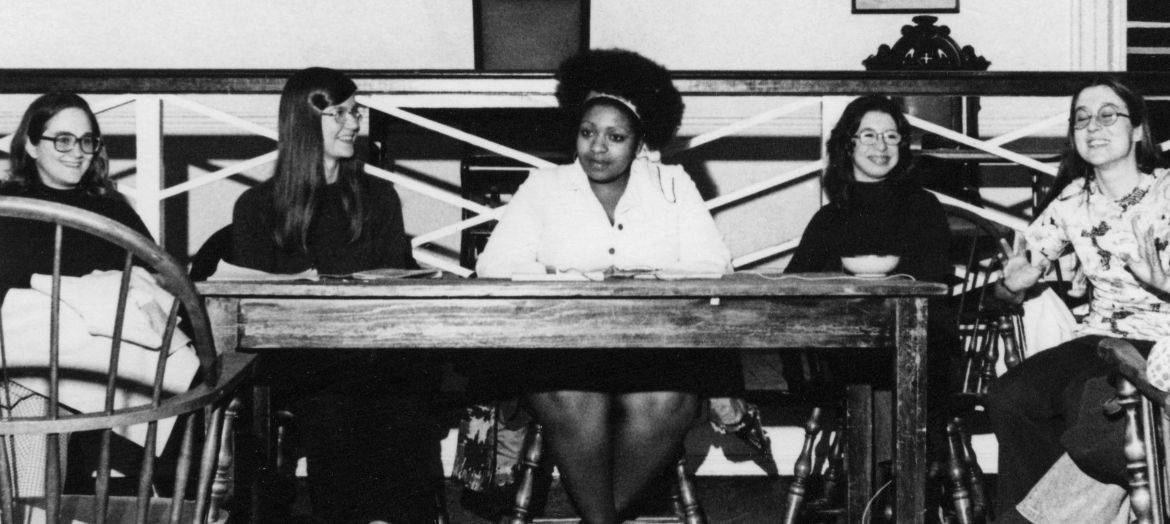
<p>Virginia Law Women member Linda G. Howard ’73 moderated a discussion on “Women in Law” for the John B. Minor Pre-Legal Society. The panelists were Ellen A. Bass ’73, Margaret A. Wilson, Howard, Freda L. Mandl and Catherine B. Tackney.</p>
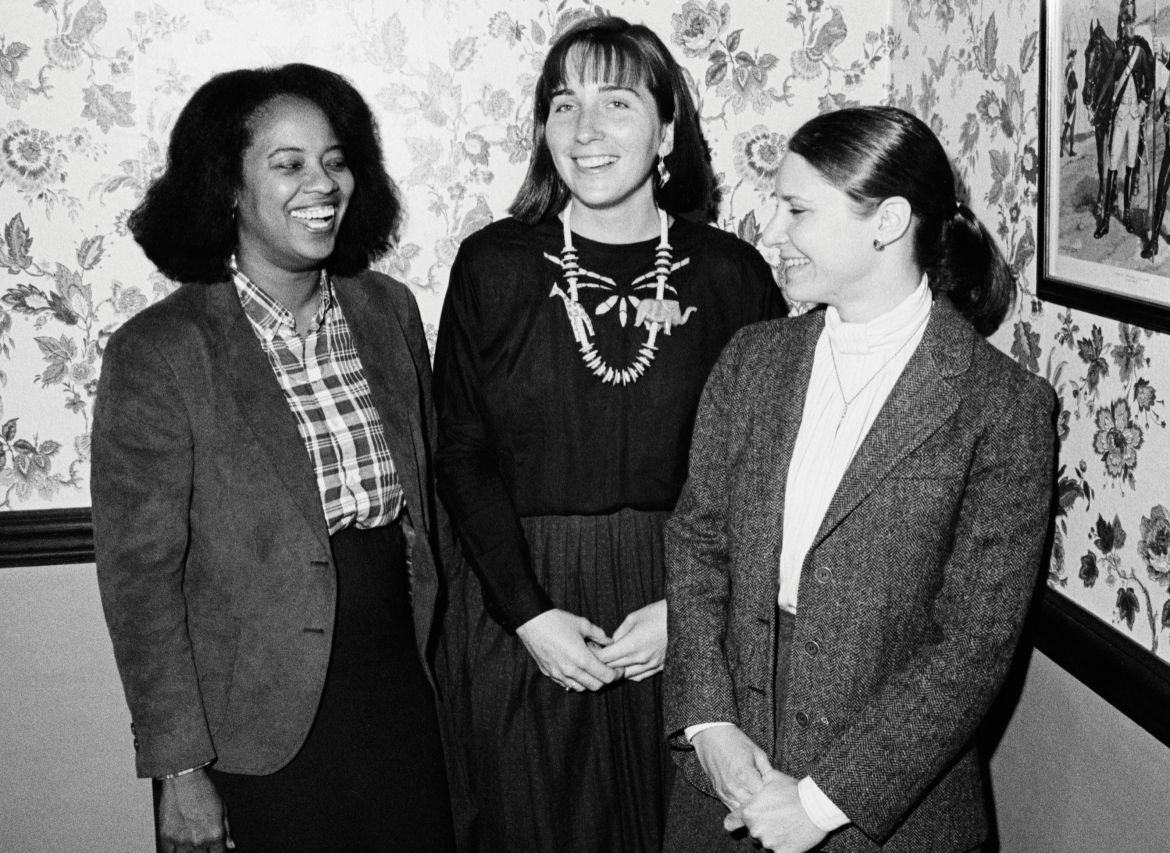
<p>New professors Mildred Ravenell (now Robinson), left, and Julie Roin, right (with VLW President Rosemary Daszkiewicz ’86), received Jefferson cups during a welcome from the Virginia Law Women in November 1985 at the Ivy Inn.</p>
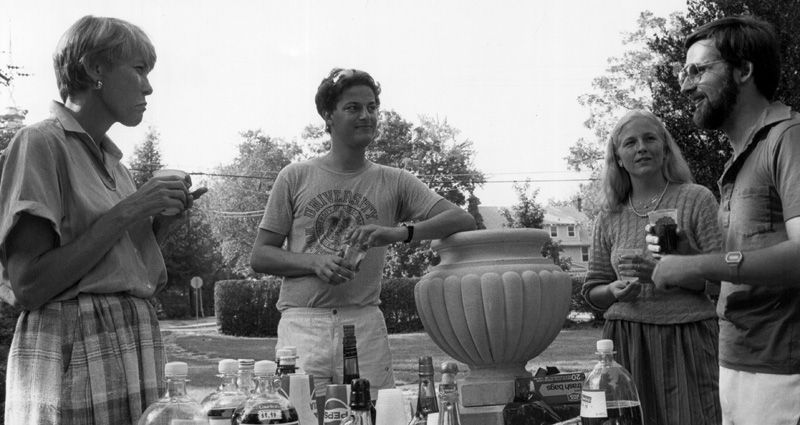
<p>In 1985, Virginia Law Women hosted a reception for new members at Professor Lillian (Altree) BeVier’s home.</p>
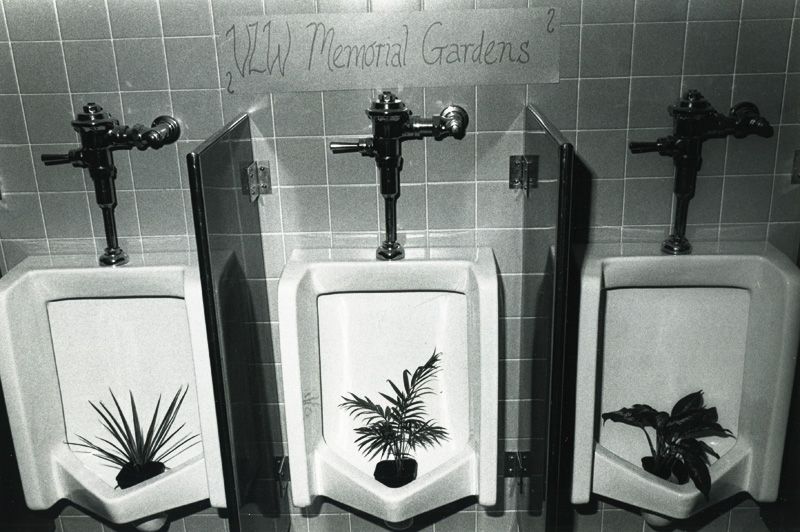
<p>After the Law School moved into its new building on North Grounds, there was a problem. The number of women’s rooms didn’t serve the growing number of female students. Some of the men’s rooms had to be converted, but to avoid retiling, the urinals were left in place. Virginia Law Women in 1984 wanted to make it clear that women were there to stay by putting potted plants in the urinals, and by making a ceremony out of their care.</p>
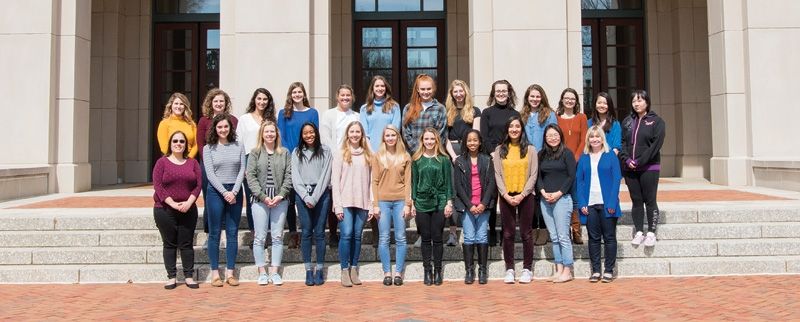
<div>
Pictured here in 2019, Virginia Law Women today hosts multiple events each year, often in association with other student organizations, on issues related to women.</div>
Women at Work
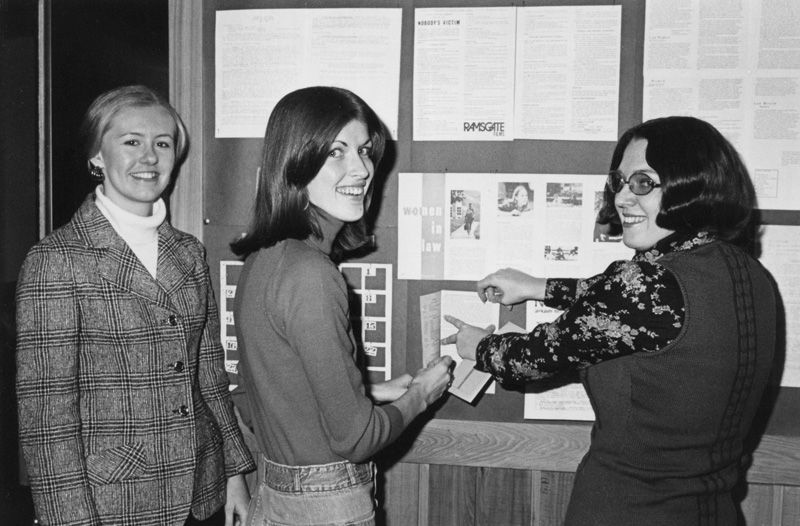
<p>VLW members in 1975: Dolores H. Dabney ’77, Deborah S. Ryan ’77 and Linda J. McKay ’75.</p>
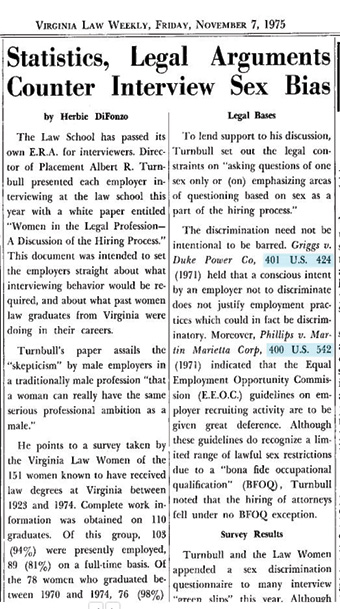 In the fall of 1974, working with the UVA Law Placement Office to address sex discrimination in the hiring process, members of Virginia Law Women researched the careers of all alumnae and sent out surveys to living alumnae. The results showed how active alumnae were in the legal profession. Of the more recent graduates, 98% worked outside the home, countering discriminatory perceptions that women were mostly dedicated to home life. The Placement Office incorporated the statistics into a white paper titled “Women in the Legal Profession – A Discussion of Hiring Process.” The paper was given to interviewing firms and outlined the Law School’s commitment the enforcing Title IX.
In the fall of 1974, working with the UVA Law Placement Office to address sex discrimination in the hiring process, members of Virginia Law Women researched the careers of all alumnae and sent out surveys to living alumnae. The results showed how active alumnae were in the legal profession. Of the more recent graduates, 98% worked outside the home, countering discriminatory perceptions that women were mostly dedicated to home life. The Placement Office incorporated the statistics into a white paper titled “Women in the Legal Profession – A Discussion of Hiring Process.” The paper was given to interviewing firms and outlined the Law School’s commitment the enforcing Title IX.

